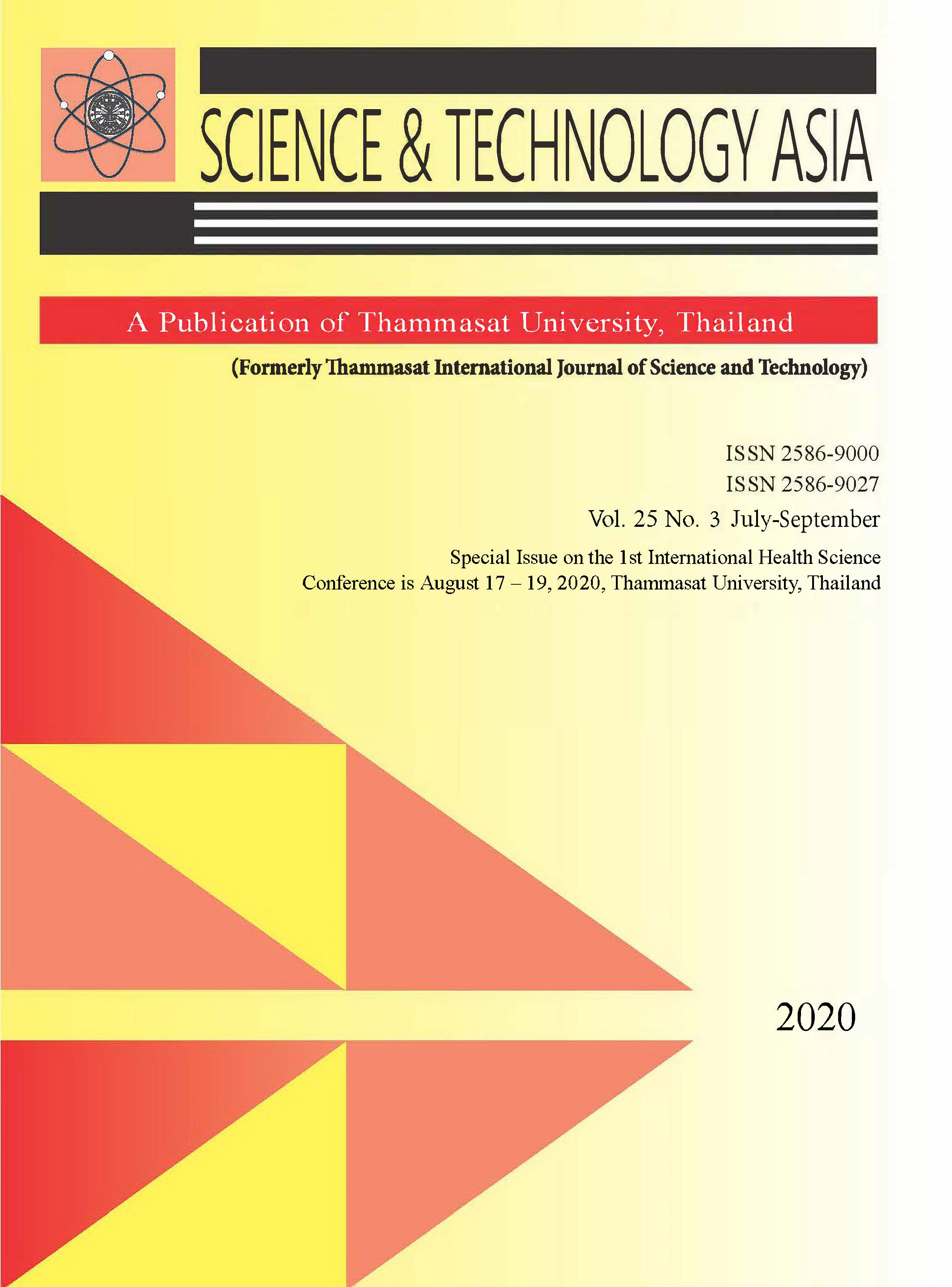Cytotoxicity against Cervical and Breast Cancer Cells of Leard-Ngam Remedy and Its Plant Compositions
Main Article Content
Abstract
The Leard-Ngam (LG) remedy has been used in Thai traditional medicine to balance women’s health. Previous studies reported that some herbs in the LG remedy, such as Boesenbergia rotunda, Myristica fragrans, Piper nigrum, Zingiber officinale and Zingiber zerumbet, were active against cancer cells but there was no report for the LG remedy. The objectives of this study were to investigate the cytotoxicity of the LG remedy and its plant compositions against two breast cancer cells (MCF-7, T47D) and cervical cancer cells (HeLa) in comparison with keratinocyte cells (HaCaT). The stability of the remedy was also studied at accelerated conditions for 6 months and its markers were evaluated by HPLC method. These extracts were prepared according to those practiced by Thai traditional doctors i.e. by maceration in 95% ethanol and decoction with water. These extracts were evaluated for cytotoxic activity by sulphorhodamine B (SRB) assay. The results showed that the LG remedy extract showed good activities against breast cancer cells (T47D and MCF-7) with a selective index of 3.33 and 2.99, respectively. For single herbs, the 95% ethanolic extract of Oroxylum indicum showed the best activities. It exhibited specific cytotoxicity against breast (MCF-7, T47D) and cervical (HeLa) cancer cells with a selective index value of 4.31, 3.43, and 4.18, respectively. The phytochemical compounds of the LG remedy were eugenol and piperine. They were not stable under accelerated conditions. In summary, the LG remedy and some single herbs were effective in inhibiting breast cancer cells. It should be further studied in other types of cells and the identification of active ingredients should be conducted for future drug development.


